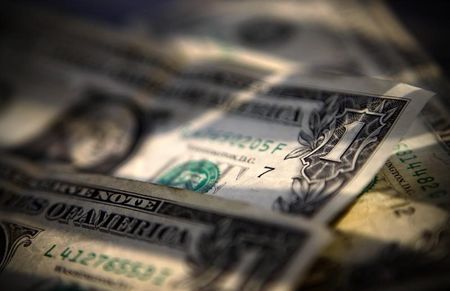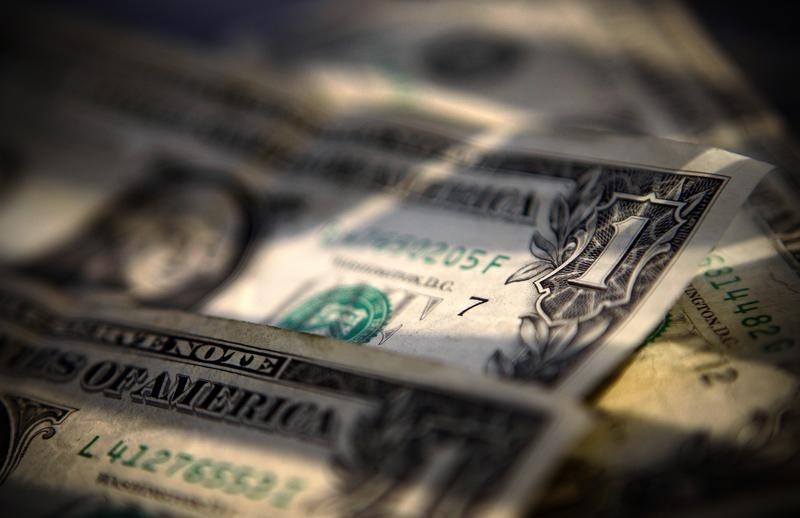Forex
Yen weakens as Bank of Japan keeps interest rates negative, dollar strengthens


© Reuters.
The Japanese yen fell sharply on Friday after the Bank of Japan (BOJ) decided to keep interest rates in negative territory at -0.1 percent. This decision came just days after the Federal Reserve signaled that U.S. borrowing costs would remain high, exerting pressure on the Japanese currency and raising the possibility of government intervention. The yen dropped to as low as 148.42 against the dollar, nearing the 150 mark, a level at which analysts have suggested government intervention to support the currency could be likely.
BOJ Governor Kazuo Ueda stated at a press conference that the central bank has yet to foresee inflation stably and sustainably achieving their price target. As such, they will continue to maintain an ultra-loose monetary policy until they are confident inflation will remain at their 2 percent target. However, Ueda also noted that policy shifts could occur if they foresee the achievement of their target.
Speculation regarding potential Tokyo intervention to support the yen has been growing. Japan’s Finance Minister Shunichi Suzuki warned against a yen sell-off that could harm the trade-reliant economy and did not rule out any options for intervention on Friday. Alvin Tan, head of Asia FX strategy at RBC Capital Markets, suggested that we are moving towards intervention levels due to increasingly explicit verbal intervention warnings from the Ministry of Finance.
Meanwhile, in the United States, the was on track for its 10th consecutive weekly increase following the Fed’s decision and weakening economic data from France that led to a drop in the euro. The dollar index rose 0.16 percent to 105.55 on Friday and was set for a weekly increase of around 0.2 percent.
The Federal Reserve maintained interest rates at 5.25 percent to 5.5 percent on Wednesday and emphasized that it would hold them at this level as long as necessary to push inflation back to 2 percent. This stance has pushed yields on 10-year U.S. Treasuries to their highest level since 2007 at over 4.47 percent, making dollar-denominated U.S. bonds more attractive and bolstering the greenback.
Ray Sharma-Ong, investment director of multi-asset solutions at abrdn, stated that the U.S. dollar will perform well due to the Fed’s hawkish stance, the reduction in the expected number of rate cuts in 2024, resilient U.S. growth, and expectations of slower growth in the euro area relative to the U.S.
In other currency news, the sterling slipped to a roughly six-month low of $1.22305 on Thursday when the Bank of England halted its long run of interest rate increases after Britain’s fast pace of price growth unexpectedly slowed. The Australian dollar saw an increase of 0.25 percent at $0.6433 on Friday.
This article was generated with the support of AI and reviewed by an editor. For more information see our T&C.

 Forex3 years ago
Forex3 years agoForex Today: the dollar is gaining strength amid gloomy sentiment at the start of the Fed’s week

 Forex3 years ago
Forex3 years agoUnbiased review of Pocket Option broker

 Forex3 years ago
Forex3 years agoDollar to pound sterling exchange rate today: Pound plummeted to its lowest since 1985

 Forex3 years ago
Forex3 years agoHow is the Australian dollar doing today?

 Cryptocurrency3 years ago
Cryptocurrency3 years agoWhat happened in the crypto market – current events today

 World3 years ago
World3 years agoWhy are modern video games an art form?

 Commodities3 years ago
Commodities3 years agoCopper continues to fall in price on expectations of lower demand in China

 Economy3 years ago
Economy3 years agoCrude oil tankers double in price due to EU anti-Russian sanctions



























